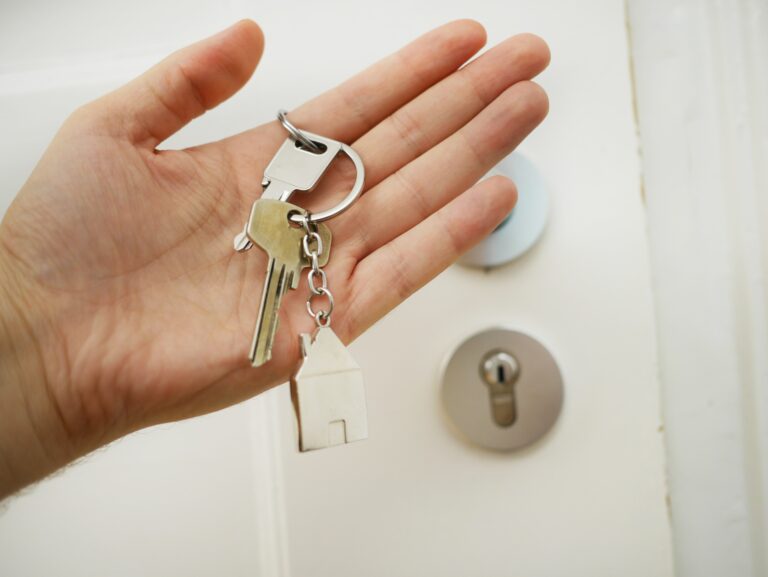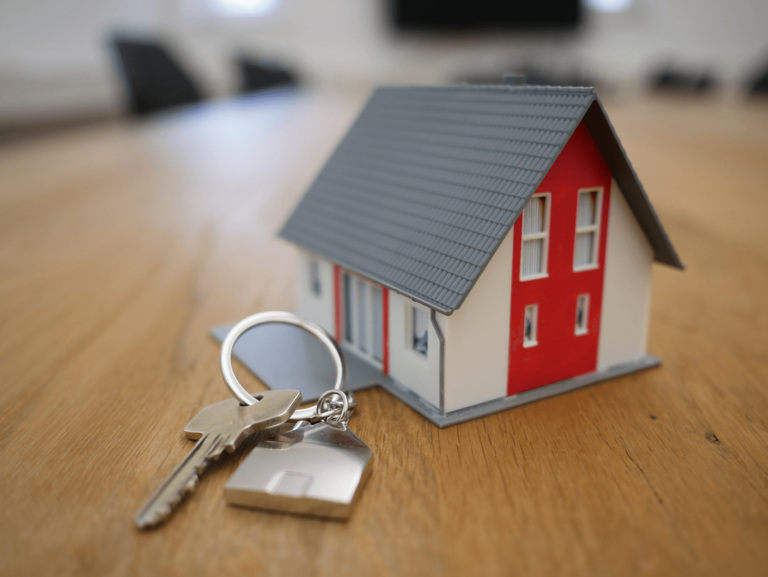Nobody enjoys paying stamp duty. We think that’s safe to say, right?
You could be buying your first property. You’ve negotiated a price you’re able to pay, only to discover you also need to factor in stamp duty. Maybe this isn’t your first rodeo, but the stamp duty rates and policies have likely changed since you last purchased a property.
Whether you are a first-time buyer in England or in the home-buying process, this simple guide will help you discover everything you need to know about stamp duty.
In this guide you can find the following information:
- What is stamp duty?
- Previous stamp duty rates
- How much is stamp duty in the UK?
- Do you need to pay stamp duty?
- Do first-time buyers pay stamp duty?
- How much is stamp duty in Scotland?
- How much is stamp duty in Wales?
- When do you pay stamp duty?
- How to pay stamp duty?
- Can you claim stamp duty back?
- Can you add stamp duty to your mortgage?
- Do you pay stamp duty on additional property?
- Do non-UK residents pay stamp duty?
What is stamp duty?
Stamp duty, (also known as Stamp Duty Land Tax, or SDLT for short) is a one-off tax paid on property bought in England and Northern Ireland and applies to both freehold and leasehold properties – whether you’re buying outright or with a mortgage.
It’s a tiered tax, so the amount you pay depends on the price of the property. Thanks to changes made in 2014, the amount you pay depends on how much of the property price falls within each tax threshold.
Previous Stamp Duty rates
Prior to the changes in 2014, the system for calculating this tax on property purchases was constantly under criticism. It was outdated, unfair and it seemed to discourage first-time buyers.
Under this system, your purchase was taxed at a single rate, determined by the entire property price.
- If you bought a house for £250,000 under this system, you would be charged a 1% tax, coming to £2,500.
- If that same house was sold for a pound more at £250,001, the property would be taxed at 3% – bringing your bill to just over £7,500.
Sellers had less flexibility to price their homes appropriately. Exceeding the thresholds just slightly would make their property much more unattractive to buyers.
How much is stamp duty in the UK now?
Since autumn of 2014, rates of stamp duty now only apply to the portion of the property price that falls within its respective threshold.
Here’s a practical example:
- You buy a three-bedroom flat for £300,000.
- There’s no stamp duty on the first £125,000 = £0.
- There’s 2% on the portion of the price between £125,001 – £250,000 = £2,500.
- There’s 5% on the portion of the price between £250,001 – £925,000 = £2,500.
In total, you would pay £5000. Under the old system you would have paid £9,000.
There are plenty of online resources to help you calculate your stamp duty. This SDLT calculator on the GOV.UK website we find particularly useful.
Do you need to pay stamp duty?
Circumventing or ignoring the tax authority is rarely a good idea. If your property is under £125,000 you will still have to submit a return, even though your stamp duty liability is zero.
There are circumstances in which stamp duty doesn’t have to be paid, this includes:
- If the property was left to you in a will.
- If the property was assigned to you due to a divorce or separation of a civil partnership – if the couple decides to separate without a court order, they’ll be exempt from stamp duty.
- If you gift your house to someone, they won’t need to pay stamp duty on the property’s market value, provided it doesn’t have an outstanding mortgage. If a person is taking over the mortgage (whether it’s all or part of it), stamp duty may be payable on the value of the mortgage in accordance with the SDLT threshold it falls under.
Top Tip
It’s worth remembering that if the property you are buying is only just in a higher stamp duty band, you might be able to persuade the seller or estate agent to lower the price.
Do first-time buyers pay stamp duty?
If you’re a first-time buyer, you won’t need to pay stamp duty unless the price of the property you’re purchasing is over £300,000. This is thanks to tax relief for first-time buyers which came into effect 22nd November 2017 for people buying residential properties in England and Northern Ireland. As you can see in the table below, first-time buyers aren’t subject to paying any tax if the property doesn’t fall into this threshold – if it comes under a higher band, the standard rate applies.
| Property price | Standard stamp duty rate | Stamp duty rate for first-time buyers |
| £0-£125,000 | 0% | 0% |
| £125,000-£250,000 | 2% | 0% |
| £250,000-£300,000 | 5% | 0% |
| £300,000-£500,000 | 5% | 5% |
| £500,000-£925,000 | 5% | 5% |
| £925,000-£1,500,000 | 10% | 10% |
| £1,500.000 + | 12% | 12% |
In Scotland, first-time buyer relief works a bit differently. Scotland has the Land & Buildings Transaction Tax (LBTT), which applies to properties costing over £145,000, however, first-time buyers won’t need to pay this tax unless the property is £175,000 or over.
How much is stamp duty in Scotland?
The table below highlights the cost of stamp duty in Scotland depending on the value of the property:
| Value of the property | LBTT |
| £0-£145,000 | 0% |
| £145,001-£250,000 | 2% |
| £250,001-£325,000 | 5% |
| £325,001-£750,000 | 10% |
| £750,000 + | 12% |
How much is stamp duty in Wales?
Stamp duty also works a little differently in Wales too. They have what is called a Land Transaction Tax (LTT) which is payable when you buy a property and land in Wales. This new system of stamp duty came into effect in April 2018. Below is a table which indicates how much stamp duty you can expect to pay when buying a property in Wales:
| Value of the property | LTT |
| £0-£180,000 | 0% |
| £180,000-£250,000 | 3.5% |
| £250,001-£400,000 | 5% |
| £400,001-£750,000 | 7.5% |
| £750,001-£1,500,000 | 10% |
| £1,500,000 + | 12% |
When do you pay stamp duty?
You will have to submit a Stamp Duty Land Tax return to HMRC within 14 days of completing a purchase of a property and pay the tax that is due (completion is the day when the money has been transferred and the new owner is in possession of the keys).
How to pay stamp duty
Normally your solicitor (sometimes an agent or conveyancer) will manage the payment for you, then add the total amount to their fees. However, you are the one responsible for making sure it’s submitted on time. Failure to pay on time could see you could facing a fine:
- £100 penalty if filed within three months of the deadline.
- £200 penalty if filed within more than three months of the deadline.
You will also be charged interest on late payment of stamp duty. This starts after the 30-day deadline and continues until the payment is settled. The interest isn’t considered to be a penalty, so you can’t appeal against it.
Can I claim stamp duty back?
You might be eligible to claim stamp duty back if you bought a new property without selling your previous one but sold the property within a three year period.
If you’re eligible for claiming stamp duty back, you simply need to complete a Stamp Duty Land Tax (SDLT) form and send it to HMRC. You can also choose to hire the help of a conveyancer or solicitor to help you with this process.
Can you add stamp duty to your mortgage?
Yes, you will be able to add stamp duty to your mortgage, however, you may be charged interest. This means that it could work out cheaper for you to just pay your stamp duty right away. That said, if you won’t be able to pay your stamp duty immediately, you can add it to your mortgage and aim to pay it at your earliest convenience.
Do you pay stamp duty on additional property?
Yes, if you’re purchasing an additional property in England or Northern Ireland, you will be charged a 3% surcharge on each of the SDLT threshold bands.
Do non-UK residents pay stamp duty?
Yes, and if you’re a non-UK resident buying a property in England or Northern Ireland, you’ll need to pay an additional 2% on top of the standard stamp duty rate for properties worth over £40,000 (different rates of SDLT came into effect on 1 April 2021). You can find more information on non-UK resident stamp duty by heading to the GOV.UK website.
We hope that this guide has helped you in understanding stamp duty and what you can expect to pay as either a first-time buyer or as someone already on the property ladder. If you have any more questions, please do feel free to contact us – we’d be happy to help!
Looking to buy or sell to start your next chapter? Whether you’re buying a property for the very first time or you’re looking to sell your house for the best price possible, we make the process of moving from A to B easy. Speak to one of our friendly estate agents in your local area today or book your free property valuation online to get the ball rolling.







